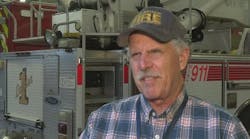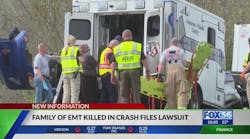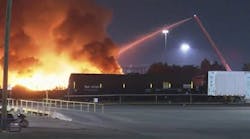When it comes to being notified of emergencies over the county's new narrowband radios, one phrase comes to mind for West Burlington Fire Chief Mike Heim.
"Hit and miss," he said, describing a federally mandated radio system full of bugs his department has had to work around with cell phone text messages.
Tired of missing pages with the system, firefighters in Heim's department have been notified of emergencies via text message for the last two weeks. Using cell phones has worked well for the department, but before that, it wasn't uncommon for more than half of Heim's firefighters to have silent pagers during an emergency.
"It's limited our response," Heim said. "When you have 30 pages out and only seven trip, that limits your response."
Though his department has coped with the faulty system, Heim said the pitfalls of narrowbanding represent a safety risk, not only for the public, but for his firefighters, too.
"Safety-wise, we've tried to get people out of buildings, and it's taken six or seven calls from the commander to try to get the guys out of the building, or make changes in the operations," Heim said.
No one has been hurt yet, but the narrowband problem has gotten so bad Heim's department has started to blast air horns on trucks at fires to notify firefighters inside to evacuate.
"If we have a crew that's working inside and they can't reach the outside, that's a problem," said Burlington Fire Department Deputy Chief Gene Wilkerson, noting faulty hardware is as much the culprit as narrowbanding in his department's case.
Public safety agencies in Des Moines County switched to the narrowband system in 2010 with a $263,614 federal grant. The switch was mandated by the Federal Communications Commission. By Jan. 13 of next year, all public safety radio systems must switch to narrowband frequencies.
Narrowbanding is supposed to allow more radio traffic, though it also decreases the range of the radios from about 25 kilohertz to 12 kilohertz. In other words, while narrowbanding allows more parties to communicate simultaneously over radio waves, it also limits the distance parties communicate from a radio tower.
This is a built-in feature of the new radio system, Wilkerson said, a feature that can be worked around with range amplifiers called repeaters, or voters.
"That's just the nature of the beast there a little bit," Wilkerson said. "Narrowbanding decreases your range, and we knew that was going to happen."
Radio signals are relayed back and forth via radio towers, and the strength of those signals under the narrowbanding system relies heavily on line of sight, Wilkerson said. The Burlington Fire Department relays its transmissions via a radio tower on Dehn Street, but if that tower is out of sight, or more than 13 miles away from an emergency, there's a good chance a page or two will be dropped.
"If we get down in the bottoms somewhere, we don't necessarily have that direct line of sight communication to the tower," Wilkerson said. "That causes issues."
This means a firefighter can be within eyeshot of the department's command center at a fire, yet be unable to receive messages over his radio from his commander.
"We've been at grassfires where the guys can be in line of sight, right in front of each other, and they couldn't talk to each other by portable radios," Heim said. "That's how serious it is."
And the problem is not isolated.
"Anybody that's gone to narrowbanding is experiencing this issue," Wilkerson said.
The West Burlington Police and Des Moines County Sheriff's office experienced similar problems when they adopted the system, though they've since worked out the bugs. Area law enforcement officials have access to a locally designed computer program that allows emergency calls from the dispatch center computer to be automatically uploaded to the mobile computers in their squad cars.
This works well for the police, but county fire departments don't have access to the same technology. Consequently on Thursday, Heim didn't receive paged notification of a fire at Walmart.
"If it wasn't for the phone, I wouldn't have known (my firefighters) were going out, because my pager didn't open up," Heim said. "Six, seven minutes makes a big difference."
For the Danville Fire Department, the issue has become almost intolerable. Firefighters didn't receive radio notification of a vehicle fire in the area until the signal had been sent three times over.
"This is causing a significant delay in response," Danville Fire Chief Kevin Pierce said in an email to Heim. "We need to have this fixed immediately."
Using more than $200,000 in federal grants awarded in April, the county is purchasing equipment designed to increase the coverage area.
Repeaters, once installed on radio towers, take in radio transmissions then reproduce amplified versions of them that are relayed back to the receivers.
"It's going to help expand the range of our radio system," Wilkerson said. "We're working on a grant process through the federal government, and they're in the process of identifying the sites where the hardware's going to go."
The cell phones are working for now, Heim said, but the inability to communicate at emergencies is worrisome.
"Nobody's gotten hurt, but if it continues, it's a safety liability," Heim said.
Copyright 2012 - The Hawk Eye, Burlington, Iowa
McClatchy-Tribune News Service





